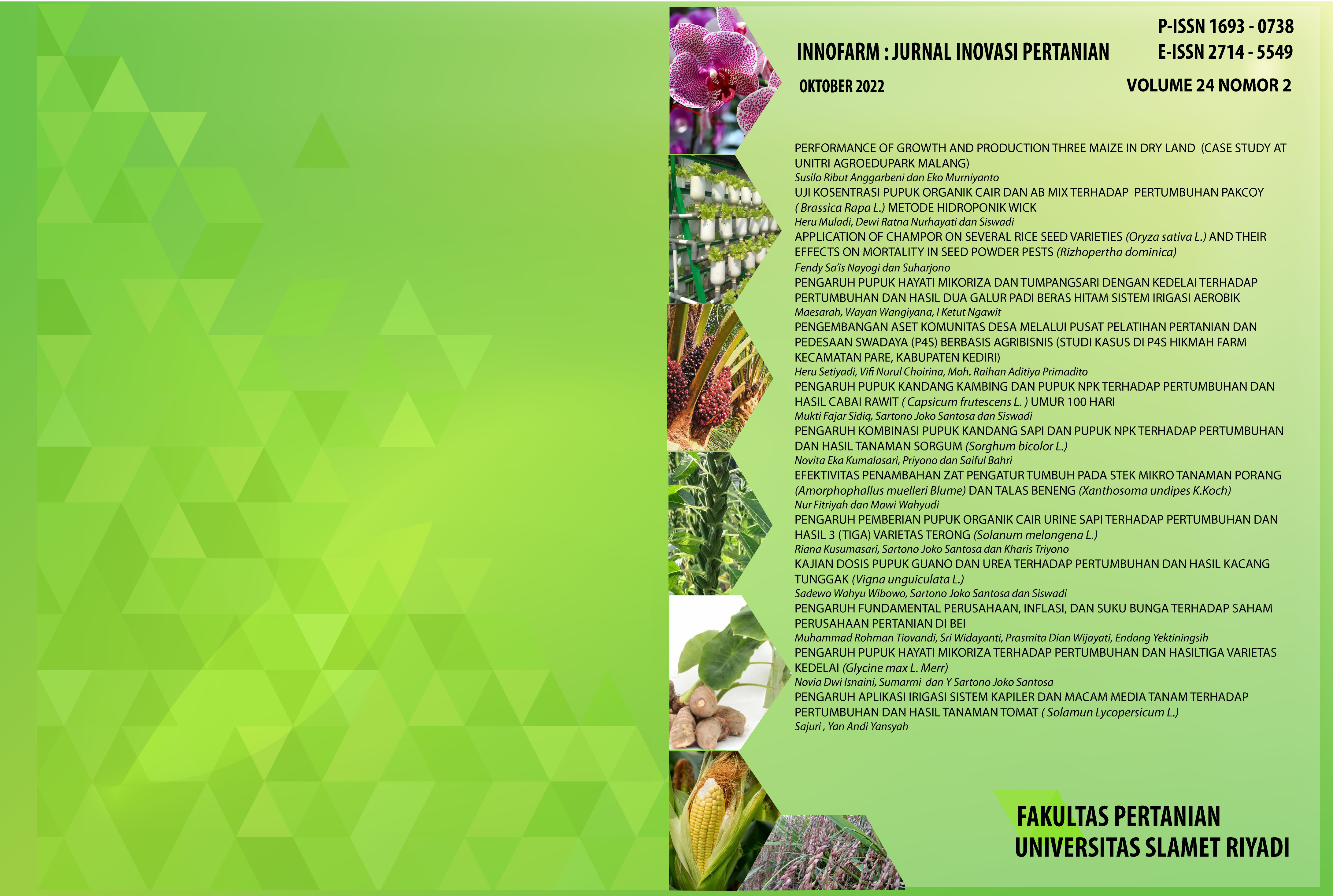EFFECT OF GOAT MANURE AND NPK FERTILIZER ON THE GROWTH AND YIELD OF CAYENNE PEPPER ( Capsicum frutescens L. ) 100 DAYS OLD
Keywords: NPK fertilizer, Cayenne pepper, goat manure
DOI:
https://doi.org/10.33061/innofarm.v24i2.7613Abstract
Effect of dose of NPK fertilizer and goat manure on growth and yield of cayenne pepper (Capsicum frutescens L.) aged 100 days. Conducted at the Experimental Garden of the Faculty of Agriculture, Slamet Riyadi University, Surakarta on November 22, 2021 – March 2, 2022. The purpose of this study was to determine the effect of goat manure and NPK on growth and yield of 100-day-old cayenne pepper (Capsicum frutescens L.). This study used a completely randomized design (CRD) with 2 factors and 3 replications. The two factors are NPK fertilizer (N) with 4 levels, namely: control (N0), dose of 2.5 grams/polybag (N1), dose of 5 grams/polybag (N2), dose of 7.5 grams/polybag (N3), goat manure consisting of 4 levels, among others: control (K0), a dose of 80 grams/plant (K1), a dose of 160 grams/plant (K2), a dose of 240 grams/plant (K3). The results showed that the application of NPK (N) fertilizer had an effect on when flowers appeared and fruit diameter was the fastest at 49.00 and the largest fruit diameter was 1.00 cm. The application of goat manure (K) did not affect all observations. The interaction between the application of NPK fertilizer (N) and goat manure (K) did not affect all parameters
Downloads
Published
Issue
Section
License
Copyright (c) 2022 Mukti Fajar

This work is licensed under a Creative Commons Attribution-NonCommercial 4.0 International License.
Authors who publish this journal agree to the following terms:
- Authors retain copyright and grant the journal right of first publication with the work simultaneously licensed under a Creative Commons Attribution License that allows others to share the work with an acknowledgement of the work's authorship and initial publication in this journal.
- Authors can separately make additional contractual arrangements for non-exclusive distribution published by the journal (e.g., publish it in a book), with an acknowledgement of its initial publication in this journal.
- Authors are allowed and encouraged to send their work via online (e.g., in the institutional repositories or their website) after published by the journal.















